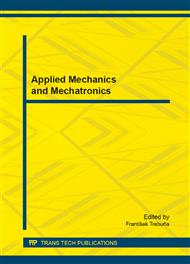p.115
p.121
p.130
p.137
p.145
p.156
p.162
p.170
p.175
Modelling a Liquid Material in Drop Test Simulations of a Cask for Liquid Radioactive Waste
Abstract:
The aim of this paper is the comparison of different material models for the simulation of fluid impact on a cask for transport of radioactive liquid material. Simulated is a 9 m drop test performed according to International Atomic Energy Agency regulations. In order to reduce computational time, proposed is to model the transported fluid as a hypothetic linearly elastic material. This enables us to use less time demanding FE explicit dynamic analysis based on Lagrange formulation only instead of combination of Lagrange and Euler formulations. Compared are the results obtained for three elastic material and three fluid models based on different equations of state.
Info:
Periodical:
Pages:
145-155
Citation:
Online since:
August 2014
Authors:
Keywords:
Price:
Сopyright:
© 2014 Trans Tech Publications Ltd. All Rights Reserved
Share:
Citation:


